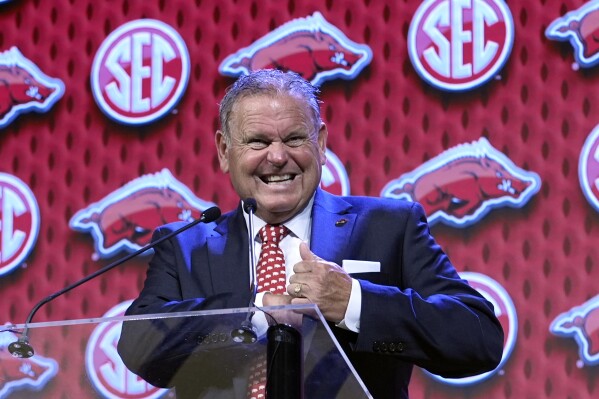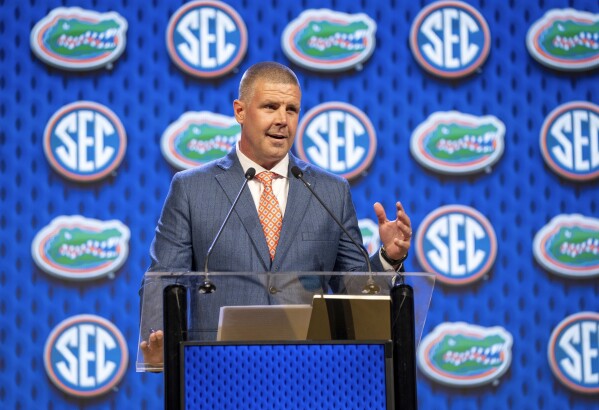The landscape of college athletics has shifted dramatically in recent years. With the introduction of Name, Image, and Likeness (NIL) deals, revenue sharing discussions, and the liberalization of the transfer portal, NCAA coaches face an unprecedented challenge—player retention. Retaining athletes has become a complex puzzle, where finances, team loyalty, recruitment strategies, and the evolving dynamics of college sports all play critical roles.
This article explores how coaches like Sam Pittman of Arkansas and Billy Napier of Florida are navigating this new environment. By understanding the major challenges and strategies being implemented nationwide, we can gain insights into the evolving culture of collegiate sports.
The Perfect Storm of Challenges in College Athletics

To truly appreciate the complexity, it’s essential to understand the core challenges coaches face today. The once relatively stable world of college sports has become a highly volatile space, characterized by the following factors:
1. The NIL Revolution
NIL rights have been nothing short of game-changing for student-athletes. These deals allow athletes to monetize their personal brand through sponsorships, advertisements, and endorsements. While this can be a financial boon for players, it creates a highly competitive environment for programs trying to retain their best talent.
Sam Pittman, Arkansas’ head coach, highlights the ways NIL has shifted the recruiting and retention dynamic. According to Pittman, NIL opportunities are often the decisive factor when athletes consider transferring. “It could be playing time. It could be finances. Probably the majority of it is finances, but you’d have to ask those guys,” Pittman said when discussing transfers from his 2023 recruiting class.
The sheer number of players entering the transfer portal is staggering, with over 3,000 Bowl Subdivision players transferring in the spring of 2025 alone. This environment compels coaches to adopt business-savvy approaches to keep their rosters intact.
2. Revenue Sharing and Financial Pressures
The $2.8 billion NCAA House settlement has introduced another destabilizing factor. Schools now face heightened financial accountability, and for many programs, the additional monetary burden has amplified the urgency of securing funding. Arkansas, for instance, determined that it required an extra $12 million annually just to support its football program in the NIL sphere.
Billy Napier, the head coach of the Florida Gators, addressed this pressure during SEC Media Days. “We present our product in a way where we’re selling the degree, the alumni network, the Gator-made program,” Napier said, speaking to the importance of long-term value as a means of mitigating the pull of immediate financial gains elsewhere.
The intersection of revenue challenges and NIL marketplace disparities has created an environment where financial inequities between programs—and even individual athletes within the same team—can disrupt locker room cohesion.
3. The Transfer Portal Frenzy
The transfer portal allows athletes greater flexibility than ever before in choosing where to play. While this mobility empowers athletes, it poses enormous challenges for programs attempting to create continuity.
Pittman’s account of Arkansas’ struggles captures the frustration many coaches share. The Razorbacks, like many programs, recruit regionally but often must look beyond state lines to attract talent. Athletes, however, are increasingly incentivized to leave their original schools in pursuit of better NIL deals or playing opportunities.
4. Balancing Loyalty and Team Culture
Loyalty is becoming a rare commodity in college sports as short-term decision-making increasingly dominates. Louisville linebacker TJ Quinn, a redshirt senior, emphasizes the value of staying put despite the temptations of better offers. “I’m just a loyal guy,” Quinn stated, adding that his loyalty rewards him with a stable and supportive environment.
Unfortunately, many programs can no longer count on loyalty as an automatic component of college team culture. Coaches are now responsible for creating tangible incentives to stay, both financial and non-monetary.
Strategies for Adapting to the New College Sports World
Despite these challenges, NCAA programs are devising innovative strategies to survive—and thrive—in this evolving arena. From cultivating loyalty to pitching long-term benefits, these tactics provide a roadmap for managing what has become one of the most volatile eras in collegiate sports.
1. Retention Through Incentives
Retention must now be treated as an ongoing process—not limited to a one-time scholarship offer. Incentivizing athletes who stay is a critical strategy for maintaining team cohesion. SMU coach Rhett Lashlee underscores this approach, describing how his program prioritizes rewarding existing players before pursuing external talent. “Fair doesn’t always mean equal,” Lashlee explains, emphasizing performance-based rewards within the framework of team culture.
Similarly, Dave Doeren of North Carolina State believes retention should prioritize those who have proven themselves within the program. “A guy that’s been on a team three years… should make more than a guy coming in the door,” Doeren said, advocating for a commonsense system of compensation aligned with individual contributions.

2. The “Program Pitch” Approach
Head coaches are also refining their “pitch” to players during both recruitment and retention talks. At Florida, Billy Napier employs a forward-looking narrative that stresses the advantages of stability. According to Napier, presenting a clear picture of what life is like within the program can effectively keep players committed long-term.
Napier’s strategy has resonated; the Gators’ 2023 recruiting class remains largely intact years later. By focusing on holistic development—both as athletes and professionals—Napier provides his players with incentives beyond just immediate financial rewards. Offering access to alumni networks and post-graduation opportunities has become a key selling point.
3. Leveraging Team Culture
Team culture has always been a hallmark of successful programs, but it is now more important than ever. Coaches recognize that culture is a powerful tool in convincing players to stay.
Lashlee’s commitment to developing a “retain before recruit” mindset demonstrates the importance of treating every part of the roster—not just high performers—with equal attention. By fostering an environment where all players feel valued, teams like SMU aim to maintain a consistent core of loyal contributors.
4. Navigating NIL Contracts Wisely
Athletic departments are also becoming more sophisticated in navigating the nuances of NIL contracts. Contracts now often include retention clauses or performance incentives, ensuring that the players benefiting most are those who stick with the program.
Additionally, coaches like Pittman advocate for transparency in NIL discussions, ensuring that players understand exactly what they stand to gain—not just financially but also in terms of development and exposure.
The Long-Term Impact on College Athletics
While these strategies provide a way forward, the long-term trajectory of college athletics remains uncertain. With college football increasingly resembling the NFL, programs must balance commercialization with the traditional values that have always defined the NCAA.
The Pros and Cons of the NIL Era
The NIL revolution has undoubtedly empowered athletes, but it has also surfaced new challenges. Coaches must adapt to being both athletic mentors and business allies for their players. On the positive side, NIL gives student-athletes the financial freedom to support their families, build their brands, and prepare for life after sports. However, it has also created divisive dynamics within teams and amplified discrepancies between programs with different levels of financial backing.
Will Loyalty Survive?
Loyalty may ultimately become a byproduct of mutual benefit rather than a virtue athletes bring to the table. Programs that articulate their value propositions—combining NIL opportunities with personal and professional development—stand a better chance of fostering lasting commitments.
Athletes like TJ Quinn provide a glimpse into what loyalty might look like in this new era. By choosing stability over inflated deals, Quinn and others like him exemplify the type of balance programs aim to cultivate.
The Future of the Transfer Portal
The NCAA may need to revisit transfer policies to create boundaries that prevent abuse or destabilizing “rent-a-player” practices. Transparency and consistency across NIL deals will also be critical in minimizing the power of money alone in determining player outcomes.
Final Thoughts
For NCAA coaches, navigating the interplay between NIL, revenue sharing, and the transfer portal is no small feat. It’s a balancing act that requires strategic planning, adaptability, and a deep understanding of individual athletes.
Programs that succeed in this new environment will be those that treat retention as a continuous process. By crafting compelling narratives, rewarding loyalty, and maintaining transparency, they can create a culture where everyone—players, coaches, and administrators alike—continues to thrive.
The new college sports landscape may be complex, but it’s one filled with opportunities for those programs willing to adapt. The next generation of athletic success will belong to those who master the art of growth amid change—much like the coaches leading the way today.

